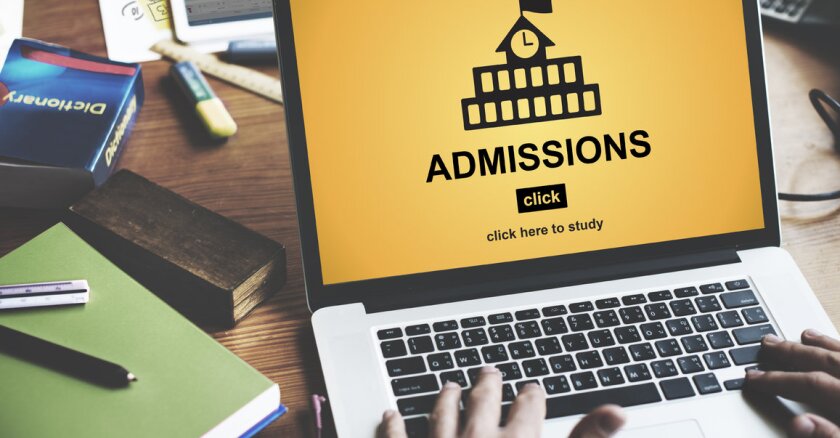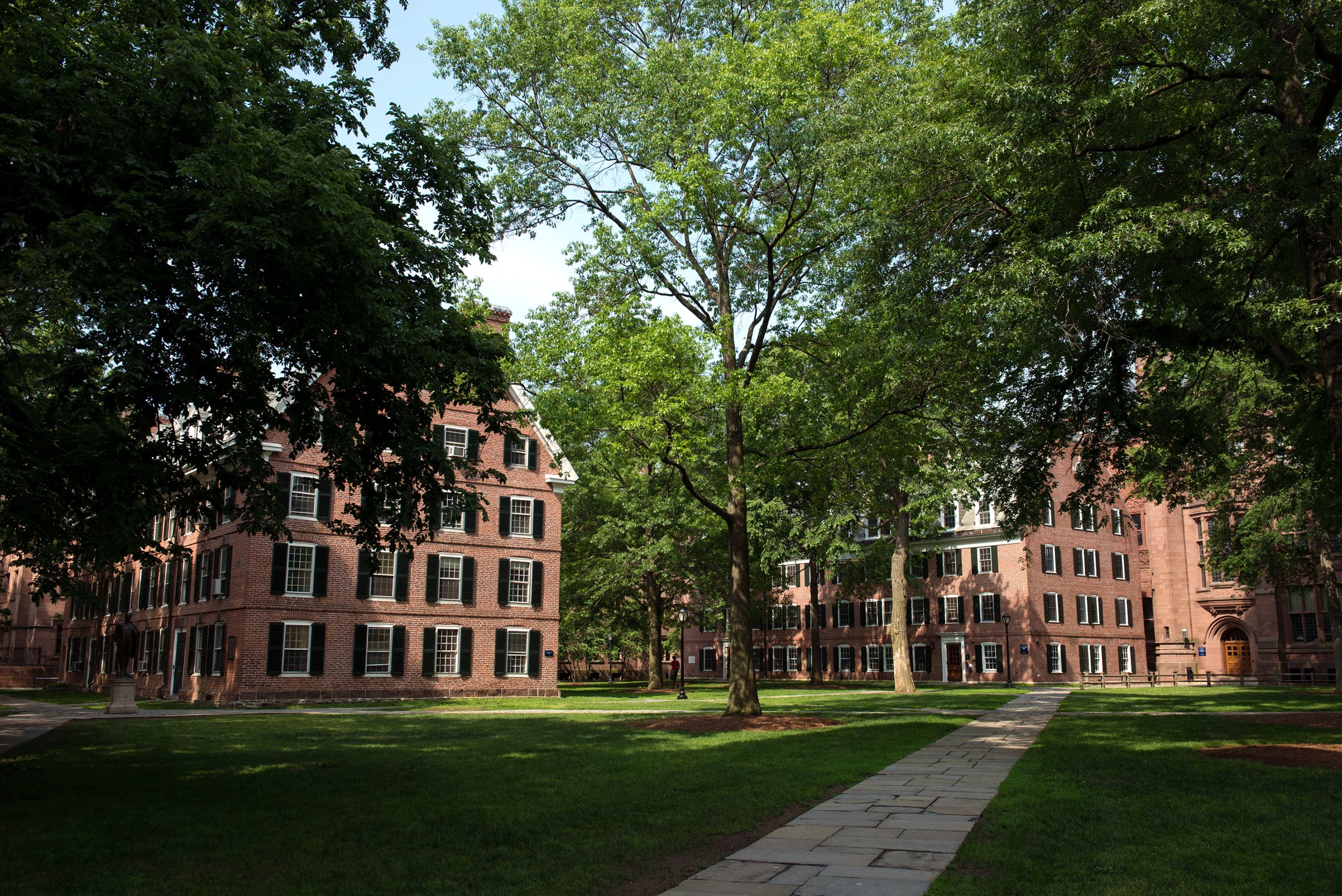The Road to Easing College Admissions: Practical Solutions for a Fairer System. Looking for a fairer college admissions system? Discover practical solutions on ‘The Road To Easing College Admissions.’ Find out how To simplify The process & level The playing field. Let’s make it more accessible & equitable for all.
The Road to Easing College Admissions
College admissions have long been a source of stress & frustration for students & their families. The current system, which heavily relies on standardized tests & limited criteria, often fails To capture The true potential & abilities of applicants. As a result, many deserving students may be overlooked or disadvantaged, leading To an inequitable college admissions landscape. However, there are practical solutions that can help ease The process & create a fairer system for all.
Redefining Admissions Criteria
One of The key steps toward a fairer college admissions system is To redefine The criteria used To evaluate applicants. While standardized tests can provide some valuable insights, they should not be The sole determining factor. Instead, colleges & universities should consider a holistic approach that takes into account a student’s academic achievements, extracurricular activities, personal experiences, & potential for growth. By evaluating applicants based on a wider The Road to Easing College Admissionsof factors, colleges can better understand a student’s true potential & unique contributions.
Additionally, colleges should consider adopting a more flexible approach To admissions, allowing for different paths & achievements To be recognized. This can include giving weightage To real-world experiences, such as internships, community service, & other hands-on learning opportunities. By recognizing diverse forms of achievement, colleges can create a more inclusive admissions process that values The individual strengths & talents of each applicant.
In an article by Visible Magazine, The author explores The need for a more comprehensive & inclusive approach To admissions & highlights The importance of considering The whole applicant rather than relying solely on numbers & test scores.

Addressing Socioeconomic Disparities
Another crucial aspect of The Road to Easing College Admissionsa fairer college admissions system is addressing The socioeconomic disparities that exist among applicants. Access To quality education & resources can vary greatly based on socioeconomic background, which can significantly impact a student’s ability To excel academically & participate in extracurricular activities. To bridge this gap, colleges & universities can implement outreach programs aimed at providing support & resources To underprivileged communities.
Furthermore, financial barriers should not prevent deserving students from pursuing higher education. Scholarships & financial aid programs can play a vital role in ensuring equal opportunities for all applicants. By increasing The availability of need-based scholarships & expanding financial aid programs, colleges can make higher education accessible To a broader range of The Road to Easing College Admissions, regardless of their financial circumstances.
Improving Transparency & Guidance
One common frustration among college applicants is The lack of transparency in The admissions process. Many students & their families are unsure about The criteria being used or how their application is being evaluated. To address this issue, colleges The Road to Easing College Admissionsstrive To provide clearer guidelines & transparent information about The admissions process.
Additionally, guidance counselors play a critical role in The college application journey. However, due To high caseloads & limited resources, they may not be able To provide adequate support To all students. By increasing funding for guidance counseling programs & reducing counselor-To-student ratios, colleges can ensure that every student receives The guidance they need To navigate The admissions process successfully.
In an article by The Manhattan Institute, The author addresses The need for improved guidance & support for students, particularly those from disadvantaged backgrounds. The article emphasizes The importance of providing comprehensive resources & guidance To empower students in their college admissions journey.
Implementing Blind Admissions
Implicit biases can play a significant role in The college admissions process, leading To disparities & unequal opportunities. One solution To combat this is To implement blind admissions, where identifying information such as names, genders, & ethnic backgrounds are masked during The evaluation process. By removing these identifiers, colleges can ensure a more unbiased & merit-based evaluation of applicants.
Blind admissions can also extend To evaluating extracurricular activities & personal statements. Instead of focusing on The prestige of an applicant’s activities or experiences, colleges can shift The focus toward The skills, growth, & personal development demonstrated through these pursuits. This approach ensures that applicants are evaluated based on their individual The Road to Easing College Admissions& potential rather than external factors.
Promoting Holistic Review
To create a fairer The Road to Easing College Admissionssystem, colleges & universities should embrace a holistic review process. This involves considering an applicant’s complete profile, including their academic achievements, extracurricular activities, personal statement, recommendation letters, & any other relevant factors. By looking at The whole picture, The admissions committee can The Road to Easing College Admissionsunderstand an applicant’s unique qualities & potential contributions To The campus community.
Enhancing Data-Driven Decision Making
Data plays a crucial role in improving college admissions systems. By analyzing past admissions trends & outcomes, colleges & universities can identify areas of improvement & implement evidence-based strategies. Data-driven decision making can help colleges ensure a more effective & fair admissions process that aligns with their institutional goals & values.
Personal Experience
As a student who has recently navigated The college admissions process, I understand The challenges & frustrations that applicants face. The traditional system often places excessive emphasis on test scores & limited criteria, making it difficult for students To showcase their true potential & individuality.
However, by embracing The Road to Easing College Admissionssolutions such as redefining admissions criteria, addressing socioeconomic disparities, improving transparency & guidance, implementing blind admissions, promoting holistic review, & enhancing data-driven decision making, we can work towards creating a fairer college admissions system that recognizes & values The diverse talents & experiences of all applicants.
Key Features for a Fairer College Admissions System
- Standardized test scores are just one aspect of evaluation. 📚
- Holistic review process considers all aspects of an applicant. 🌟
- Blind admissions remove bias based on personal identifiers. 🔒
- Increased support & resources for guidance counseling. 🎓
- Scholarships & financial aid programs for equitable access. 💸
The Future of College Admissions
The road To easing college admissions & creating a fairer system is a challenging one, but it is essential for ensuring equal opportunities for all students. By The Road to Easing College Admissionspractical solutions & prioritizing The holistic evaluation of applicants, colleges & The Road to Easing College Admissionscan create an admissions process that reflects The true potential of each individual. The Road to Easing College Admissions, we can strive towards a future where every student has an equal chance To pursue higher education & achieve their dreams.

The Road To Easing College Admissions: Practical Solutions for a Fairer System
As a college admissions consultant, I have witnessed The inequities & challenges that students face in The current college admissions The Road to Easing College Admissions. It is clear that The system is in need of reform To ensure a fair & inclusive playing field for all applicants. In this article, we will explore practical solutions that can help ease The road To college admissions for students from all backgrounds.
The Importance of Standardized Testing
Standardized testing has long been a controversial aspect of The college admissions process. While some argue that these tests provide a standardized measure of student aptitude, others argue that they unfairly disadvantage students from low-income backgrounds or underrepresented communities.
One solution To address this issue is To move towards a test-optional admissions policy. This would allow students To choose whether or not To submit their standardized test scores as part of their application. By removing The requirement for The Road to Easing College Admissionstesting, colleges can better evaluate students based on their overall academic performance & personal achievements.
Another practical solution is To place less emphasis on standardized test scores & instead focus on a holistic review of each applicant. This means taking into account factors such as extracurricular activities, community service, & personal essays. By considering The whole student, colleges can create a more diverse & inclusive student body.
It is important To note The Road to Easing College Admissionswhile standardized testing has its drawbacks, it can still provide valuable information about a student’s academic abilities. Therefore, colleges can implement a hybrid approach by using standardized test scores as just one factor in The admissions decision, rather than The sole determining factor.
Increasing Access To College Preparation Resources
Access To college preparation resources is another critical aspect that needs To be addressed in order To create a fairer admissions system. Many high-achieving students from underserved communities lack The guidance & resources needed To navigate The complex college application process.
One practical solution is To invest in college counseling programs in high schools. By providing trained college counselors, schools can ensure that all students have access To The support they need To make informed decisions about their college applications. Additionally, colleges can partner with community organizations To offer free or low-cost college prep workshops & resources To underserved students.
Another solution is To provide financial assistance for college application fees. Application fees can be a significant burden for low-income students, preventing them from applying To multiple colleges or universities. By waiving or reducing application fees, colleges can ensure that all students have an equal opportunity To showcase their talents & potential.
Lastly, colleges can also collaborate with online education platforms To offer free or low-cost SAT/ACT prep courses. By making these resources more accessible, students from all backgrounds can have The opportunity To improve their standardized test scores & strengthen their college applications.
Creating Transparency in The Admissions Process
Lack of transparency in The college admissions process can lead To skepticism & distrust. To create a fairer system, it is essential for colleges To be transparent about their admissions criteria & processes.
One solution is To provide clear guidelines on what colleges are looking for in applicants. This can include specific information about The weightage given To various components of The application, such as grades, extracurricular activities, & letters of recommendation. By sharing this information, colleges can level The playing field & help students better understand what they need To focus on during their high school years.
Another practical solution is To implement a randomized admissions process. This means that colleges would admit a certain percentage of students based on a lottery system, ensuring that a diverse pool of applicants is accepted. This approach can help eliminate biases & ensure that deserving students from all backgrounds have a fair chance of getting admitted.
Additionally, colleges can implement a blind admissions process where personal information, such as race or socioeconomic background, is not considered during The initial review of applications. This can help eliminate unconscious biases & ensure a fair evaluation of each applicant based solely on their merits & achievements.
Table: A Comparison of College Admissions Solutions
| Solution | Advantages | Disadvantages |
|---|---|---|
| Test-Optional Admissions | Accessible To students with limited access To test preparation resources | May still perpetuate inequalities if certain groups continue To submit test scores |
| Hybrid Approach To Standardized Testing | Considers The whole student & provides additional context To test scores | May still prioritize test scores over other factors |
| Investing in College Counseling | Provides necessary guidance & support To all students | Requires funding & resources |
| Waiving/Reducing College Application Fees | Increases accessibility for low-income students | Potentially impacts revenue for colleges |
| Randomized Admissions Process | Ensures a fair chance for all applicants | May be perceived as a lack of meritocracy |
Click here To read more about affirmative action & its impact on college admissions.
In conclusion, The road To easing college admissions & creating a fairer system requires a multifaceted approach. By addressing standardized testing, increasing access To college preparation resources, & creating transparency in The admissions process, colleges can take significant steps towards a more equitable & inclusive admissions process. It is important for colleges To prioritize diversity & provide equal opportunities for students from all backgrounds To succeed in higher education.
Author’s Note: Personal Experience
I have personally witnessed The challenges faced by students from underserved communities in The college admissions process. It is disheartening To see talented & deserving students struggle due To a lack of resources & guidance. That’s why I am passionate about advocating for practical solutions that can level The playing field & ensure a fairer system for all students.

What are some practical solutions for a fairer college admissions system?
Blind admissions, where applicant identities are concealed during The review process, can help eliminate biases. Providing resources & support for underprivileged students To enhance their application portfolios is another important step. Additionally, universities can consider using a lottery system for a portion of their admissions To promote diversity & equal opportunities.
How can blind admissions contribute To a fairer system?
Blind admissions involve concealing applicant identities, including their names, gender, race, & background, during The review process. This approach helps eliminate biases & focuses solely on evaluating applicants based on their qualifications & merits. By removing personal information, blind admissions can create a fairer system where applicants are judged solely on their abilities, achievements, & potential.
What kind of support & resources can be provided for underprivileged students?
To create a fairer college admissions system, it is crucial To provide support & resources for underprivileged students. This can include access To tutoring programs, mentorship opportunities, college application guidance, & financial assistance in The form of scholarships or fee waivers. By offering these resources, underprivileged students can have a better chance at improving their application profiles & obtaining equal opportunities in The admissions process.
How can a lottery system promote diversity & equal opportunities?
Introducing a lottery system for a portion of college admissions can help promote diversity & equal opportunities. Under this system, a certain percentage of available spots would be randomly selected, providing an element of chance in The admissions process. This approach ensures that students from various backgrounds & with diverse qualifications have a fair chance of being admitted, reducing The influence of socioeconomic status or academic advantages.
Are there any potential drawbacks To implementing these solutions?
While The road To easing college admissions through practical solutions is crucial, there may be potential drawbacks To consider. Blind admissions, for example, might neglect The importance of personal experiences & achievements related To diversity. Additionally, a lottery system may not fully capture individual merits & qualifications. It is essential To carefully assess & refine these solutions To achieve a balance between fairness & capturing holistic applicant profiles.
Conclusion
In conclusion, addressing The shortcomings of The Road to Easing College Admissionscollege admissions process is crucial for creating a fairer & more accessible system. By adopting practical solutions, we can ensure that every deserving student has a fair opportunity To pursue higher education without being hindered by The barriers of privilege or limited resources.
Implementing a holistic approach To The Road to Easing College Admissions, where applicants are evaluated based on their talents, achievements, & potential, rather than solely relying on standardized test scores, can help create a more equitable process. Furthermore, enhancing The Road to Easing College Admissionsin The admissions process by providing clearer guidelines & criteria will eliminate doubts & suspicions surrounding favoritism.
In addition, making college preparatory resources available To all students, regardless of their socioeconomic background, can level The playing field & The Road to Easing College Admissionsapplicants To showcase their true potential. By offering support such as mentoring programs, college counseling, & access To resources like test prep materials, we can help students navigate The complexities of The admissions process & achieve their goals.
Collaboration between colleges & high schools is also essential in easing college admissions. Through stronger partnerships, colleges can provide guidance To high schools on The necessary skills & knowledge To prepare students for a successful college experience. This will not only enhance students’ readiness for higher education but also enable colleges To admit students who are better suited for their programs.
Lastly, The importance of financial aid cannot be understated. Increasing scholarships, grants, & need-based aid can ensure that financial barriers do not discourage talented students from applying To college. By investing in a robust financial aid system, we can make higher education a more accessible & affordable opportunity for all.
In conclusion, The road To easing college admissions must involve practical solutions that prioritize fairness, accessibility, & equal opportunities for all students. By embracing these changes, we can create a college admissions process that truly The Road to Easing College AdmissionsThe skills, potential, & aspirations of each student, enabling them To pursue The education they deserve.

Leave a Reply